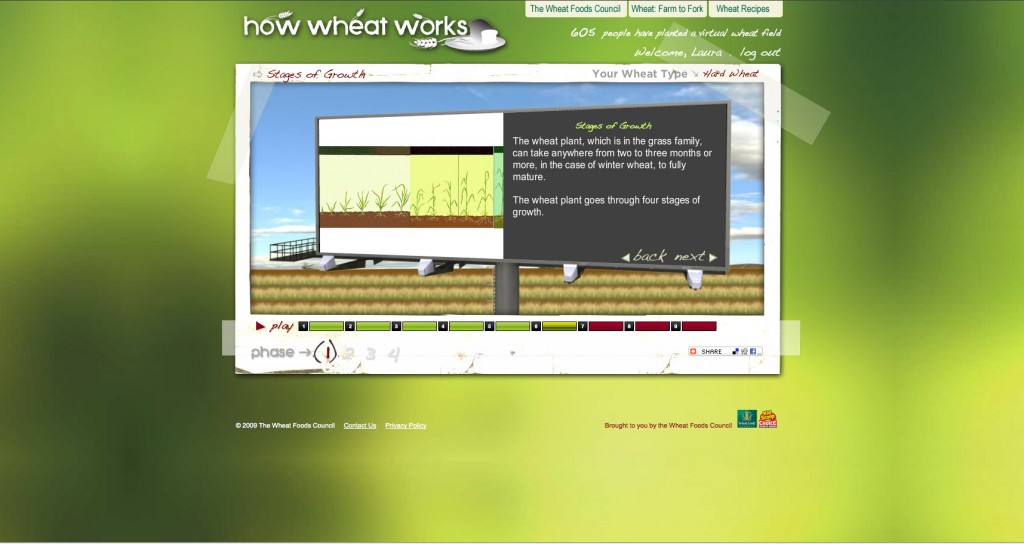This is a Sponsored Post written by me on behalf of Wheat Food Council. All opinions are 100% mine.
I love wheat. I have buckets and bags of whole wheat in my storage room and a wheat grinder in my kitchen. The year that CandyMan gave me the wheat grinder for Christmas, my friend said to me, “Oh. Interesting. How do you feel about that?” I got the impression she was feeling sorry for me. No fancy necklaces here. But I was ecstatic about having my very own wheat grinder.
I love to cook with wheat. Some of my favorite wheat recipes include my favorite whole wheat bread, whole wheat waffles, and Wheaty Tortilla Soup. And guess what? My kids love wheat, too.
As much as I love cooking with and eating wheat, there was a lot about wheat that I didn’t know. I visited How Wheat Works and went the the virtual process of planting a wheat crop. Although my favorite kind of wheat is hard white wheat (it’s my favorite for making fluffy, light loaves of whole wheat bread with a milder taste than the more common red wheat), I didn’t know that white wheat is grown in different parts of the country. I was surprised by the places wheat is and isn’t grown in the US. I encourage you to visit How Wheat Works and go through the interactive process of learning about and then planting your own virtual wheat crop. Read on to see how signing up at www.HowWheatWorks.com is not only educational (it’s great for kids, too!) but each person who participates will help US troops and their families.
Here’s some information about How Wheat Works:
• How Wheat Works is an interactive, online multimedia program that delivers a farm-to-fork education on wheat, enabling a better understanding of its nutritional value. The program is located at www.HowWheatWorks.com. And this is the coolest part: for each participant, the Council will donate two pounds of flour, up to 90,000 pounds, to Operation Homefront, a non-profit that provides assistance to needy U.S. troops and their families.
• Participants of all ages can virtually grow, harvest and mill their own kernels to create their desired wheat food.
• Each of the program’s four phases – growth, harvest, milling/baking and the grocer’s aisle – takes just a few minutes to complete, while the program spans the course of four days.
• Interactive opportunities include the selection of the type of wheat to be grown and wheat flour to be milled.
• Activity suggestions at the end of each phase allow participants to extend their learning experience through preparing wheat-based recipes, exploring wheat grown in their area through our state wheat commission member sites and viewing harvest videos from “America’s Heartland.”
• At the Wheat Foods Council they believe that teaching people how a whole or enriched grain food comes to be can shed new light on wheat nutrition, resulting in informed food choices.
What do you love about wheat? Did you learn something new on the website? I’d love for you to share your favorite wheat recipes here in the comments or in my BlogFrog community!
© 2010 – 2013, Food Fun Family. All rights reserved.



That is quite a coincidence! My daughter and I were tested for celiacs
disease several years ago when celiacs was discovered in my family,
and we had many symptoms. I did a lot of research, and while I waited
for the results, I can tell you that I mourned the loss of
wheat….because I really do love it!
Thanks for stopping by today!
Happy SITS Saturday! How funny that we – from opposite ends of the food spectrum – have come together! (My blog is entirely gluten-free) Thanks for the info!
Oh wow! This looks fascinating! I am definitely going to do this with the kids for a homeschool assignment!
I'm curious, where do you get your wheat to be milled? (I cook with wheat flour a lot, but I have never ground my own.) However, right now, I also have 2 boys on wheat free diets, so it makes things interesting…